Devastating decisions that led to Princess Diana’s death
25 years on from Princess Diana’s death, rumours still swirl about how she died but the real reason remains simple yet complicated at the same time.
Entertainment
Don't miss out on the headlines from Entertainment. Followed categories will be added to My News.
COMMENT
Of all the places for history to change so dramatically, for the course of the house of Windsor to swerve so wildly, a grimy tunnel next to the Seine in Paris seems an unlikely choice on paper. Still, to this day, if you pass the entrance for the Pont de l’Alma tunnel in the seventh arrondissement, it is clear something momentous happened there; the nearby Flame of Liberty statue still attracting flowers and visitors, the unofficial memorial for Diana, Princess of Wales.
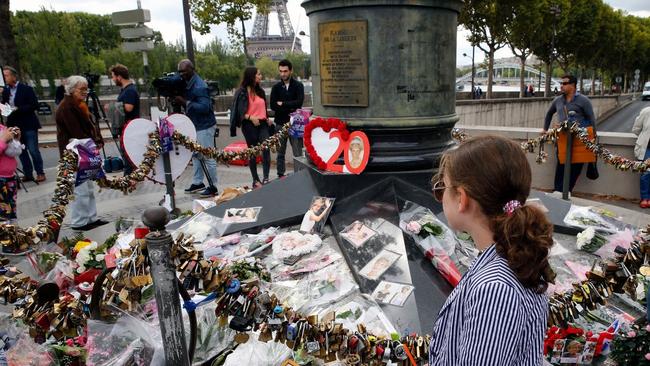
Wednesday marks 25 years since, on a summer’s night, Diana, Princess of Wales’ glittering, tragic fairytale came to a devastating conclusion in this very place.
Despite two expensive, far reaching and lengthy enquiries in the UK and France, conspiracy theories and speculation still swirls: She was pregnant! She was murdered! MI6 did it!
What has gotten much less attention is the fact that what put Diana in the Pont de l’Alma tunnel that night was a series of spur-of-the-moment decisions made by the couple; decisions that if a yes had been a no or a left had been a right might mean that the princess might still be alive today.
If at any of these junctures the princess or her boyfriend Dodi Al Fayed had made a different call, then Diana might still be alive today.
The Paris diversion
On the final day of Diana’s life, she woke up on board the Jonikal, the super yacht belonging to Dodi’s father Mohammed Al Fayed, off the coast of Sardinia.
For 10 days, Diana and her new boyfriend Dodi Al Fayed had been bobbing around the French and Italian rivieras on board the 63-metre boat which had been the epicentre of a tabloid feeding frenzy. Hordes of paparazzi in boats and even a helicopter gave chase, hungry for pictures of the canoodling, freshly enamoured couple. (The image of Diana and Dodi embracing, which ran with the famous headline “THE KISS,” ended up earning the photographer who shot nearly $4 million alone.)

On that Saturday, August 29, the trip was coming to a conclusion. But that night, a whisper passed among Al Fayed staff that their royal guest and boss would not be flying straight back to the UK as had been planned but would travel instead via Paris. It was only the next morning, August 30, that Dodi actually informed his bodyguards about the change in plans, a tendency for 11th hour logistic volte-faces that would create more and more havoc as that Saturday wore on.
As Al Fayed bodyguard Kieran ‘Kes’ Wingfield later told journalist Martyn Gregory, “We never knew where we were going from hour to hour.”
Arriving in Paris by private jet in the afternoon, Dodi’s capricious last-minute changes of plan would only create more and more of a headache for his security staff.
After landing at Le Bourget airport outside of the city, the playboy first took his royal paramour to visit Villa Windsor, the vast home that had belonged to the Duke and Duchess of Windsor and which was also owned by his father.
While the couple toured the inside, outside bodyguard Trevor Rees-Jones “was in a foul mood,” because as Al Fayed bodyguard Ben Murrell later told Gregory, author of Diana: The Last Days, “Dodi kept on coming up with his own plans, and not telling Trevor what he was going to do.”

The plan for that night was simple. They would dine at the trendy Chez Benoit and stay at Dodi’s apartment, which was right around the corner from the Arc de Triomphe. The next day, they would fly back to London and soon Diana would be reunited with her teenage sons Princes William and Harry after their summer holiday with their grandmother and father in Scotland.
However, as that Saturday wore on, the ravenous paparazzi gave chase wherever they went, leaving the duo, especially Dodi, increasingly frazzled. When the couple retreated to his luxurious and grand rue Arsène-Houssaye apartment, the situation only grew more and more chaotic.
Dinner plans
At 9.45pm, they left the apartment in a Mercedes driven by a man named Philippe Dourneau, Dodi’s chauffeur while in Paris, along with bodyguards Wingfield and Rees-Jones. When they got in the car, the men had no idea where they were headed.
“As we left the apartment, the butler [René Delorm] told us that the couple were going to a restaurant, but he didn’t tell us which one … only Dodi knew our destination,” Rees-Jones later said.
It was only once they were all in the car and as the horde of paps gave chase, that Dodi changed his mind. Chez Benoit was out, with an “infuriated, Dodi exploding, “It’s too much! It’s crazy all these paparazzi!” Gregory has reported.
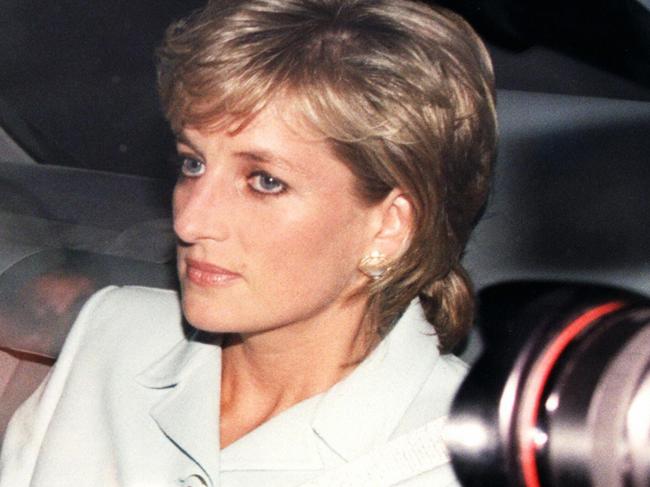
“[The photographers] were all around us, at the sides, in front, behind,” the chauffeur Dourneau has said. “They were everywhere. Some were scouts, going ahead of us to find out where we were going. I think that was what really made Dodi nervous. On the way to Chez Benoît, Dodi …[told me] he wanted to eat at the Ritz where he would be protected from the photographers.”
Dodi’s decision to head to his father’s hotel put the couple in the path of Henri Paul, the famed establishment’s acting head of security.
The missing six bodyguards
One of the recurring points of tension between Rees-Jones and Mohammed Al Fayed had been the security arrangements. In 2008 during the British inquest it was revealed that during Diana and Dodi’s cruise the Al Fayed bodyguards had been left to work 18-hour shifts and “struggled to cope,” the Guardian reported at the time. Meanwhile, their “requests for help were turned down.”
While Dodi’s father was permanently protected by a minimum of eight bodyguards, the billionaire himself reportedly made the call that only Wingfield, a former Royal Marine, and Rees-Jones, who Dodi called “my shadow,” would protect Diana and his son, arguing that the cruise was going to be “low key.”

Even once the party arrived in Paris, Wingfield “repeatedly” asked for more security staff to be added “but each time the request was denied,” according to the Daily Mail.
Wingfield told Mohammed Al Fayed’s barrister Michael Mansfield QC during the inquest: “If we were allowed to have done our jobs properly by the organisation we wouldn’t be having this conversation now.”
The anti-paparazzi ruse
Having gone off duty earlier that night at 7pm, the sudden appearance of the boss’ son and his royal girlfriend saw the Ritz’s night manager call Paul who returned to the hotel. It would later be reported that Paul was seen having trouble parking his Mini on the street.
While Diana and Dodi dined upstairs in the Imperial Suite, down in the Bar Vendôme, Winfrield, Rees-Jones and Paul sat at the bar. The security staff ate; Paul drank two glasses of the French aperitif Ricard. (Wingfield later said he thought the cloudy drink Paul was consuming was pineapple juice.)
Dodi’s chopping and changing of plans had reportedly left Rees-Jones agitated and according to Gregory, the former Special Forces officer was “on the point of resigning.”
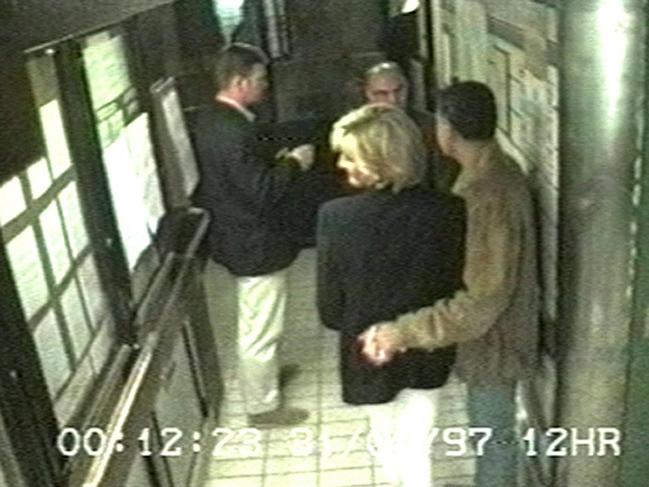
Meanwhile, outside the famed hotel the horde of press and crowds of onlookers gathered. At several points during the evening, Paul had gone outside and, according to evidence given during the British inquest into events, “taunted” the paps.
Former Times contributing editor Christopher Andersen, in his book The Day Diana Died, writes that Paul was “wild-eyed and grinning incongruously” while Dourneau has said that Paul was “more giddy than usual.”
Paul is reported to have goaded the press, saying “You won’t catch us tonight. Don’t even try.”
Once dinner was over, Dodi came up with a plan: His chauffeur and the bodyguards would leave in his Mercedes by the front entrance, thus creating a diversion while he and Diana slipped out a back entrance where they would be driven away by Paul.
The move left Wingfield and Rees-Jones “perplexed because the plan ran counter to all of their Royal Military Police training and accepted custom and practice as Fayed family security men,” Diana: The Last Days states. However, they had no room to move when they were told by Paul, “The plan has been okayed by Mohamed.”
Things had reached such a fever pitch between playboy Dodi and his security staff that “Wingfield feared at one stage that Rees-Jones was so wound up that he would land a punch on Dodi,” according to Gregory.
The final phone call
There is one final point at which this tragedy could have been averted. Dodi called his father Mohammed back in London, according to Andersen, who on hearing about the press situation asked, “Why don’t you just stay where you are and spend the night at the hotel?”
According to Andersen, Dodi said, “We can’t. We’re leaving for London in the morning and our luggage is at the apartment. Besides, the ring is there …”
(That afternoon Dodi had collected a ring from Repossi jewellers Place Vendôme. While some, including Mohammed, have maintained this was an engagement ring, the majority of the evidence points to this being the latest in a growing list of extravagant gifts that Dodi had given his royal girlfriend including a bracelet and “armfuls” of cashmere jumpers.)

The drunk driver
While Dodi was getting worked up about the press outside the hotel, Diana’s concern was that someone would get hurt.
“Mr. Dodi was a little angry because the paparazzi were messing up his holiday and upsetting his girlfriend,” Wingfield later said. “But the Princess was concerned again that somebody was going to fall in front of the cars. She just wanted them to keep back.”
Putting Paul behind the wheel was a fatal move. Not only was he not trained but he did not have the special five-year permit issued by the Parisian Prefecture of Police to be a chauffeur.
By the time that Mercedes carrying Paul, Rees-Jones, Dodi and Diana pulled away from the Ritz’s back entrance, Paul’s blood alcohol level was more than three times the legal limit. Tests later found he had the antidepressants Prozac and Tiapridal in his system in such high doses that it would have multiplied the effects of the six to eight double-Ricards he had drunk between 7pm and midnight. Post-mortem toxicology would show that Paul was in a state of “moderate chronic alcoholism” on the night he died.
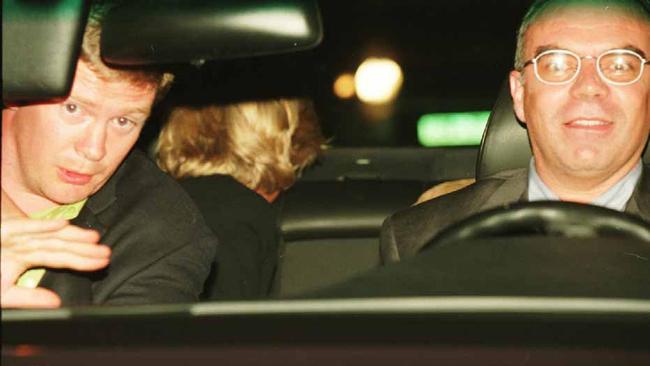
Numerous witnesses who saw the car in the minutes that followed were shocked by the speed. “It just took off — almost supersonic,” Stéphane Darmon, who was driving Gamma Agency photographer Romuald Rat, later said. Another witness said that it was moving “like a bullet” while taxi driver Michel Lemmonier recounted, “The car was flying as it passed me. It was like the hounds of hell.”
Dodi, meanwhile, it was later reported, had been known to pressure his drivers speed and jump red lights.
Only three minutes after leaving the Ritz, Dodi and Paul would be dead, Diana fighting for her life and Rees-Jones horribly injured.
The seatbelt
When the Mercedes left the Ritz, none of the occupants was wearing a seatbelt however at the entrance to the Pont de l’Alma tunnel, Rees-Jones – contrary to the standard operating procedure for bodyguards – put his on. (The thinking is, if something happens they need to be able to move quickly.)
It is impossibly heart-rending to know that Diana would likely have survived had she too put her seatbelt on.

Earlier this month, Lord John Stevens, who led Britain’s two-year Operation Paget into Dina’s death, confirmed to the Daily Beast that “it has been proven that if they’d worn their seatbelts they would have survived, even with the desperate condition of that car. That’s what the experts say.”
The police and the ‘hoaxer’
The first person to arrive on the scene was a 28-year-old waiter named Eric Petel.
He lifted Diana’s and, as he later said, “Her eyelids were fluttering, but she hadn’t opened her eyes. I asked her if she was OK and she didn’t answer me. Only then did I realise it was Princess Di.”
As he realised the severity of the crash, Petel got back on his motorbike and dashed to a pay phone to call for help.
What happened next is nearly unthinkable: When he got through to emergency services he yelled “There has been a horrible accident in the Pont de l’Alma tunnel. Princess Diana is in the car!” The officer at the other end reportedly burst out laughing and said, “This number is for real emergency calls, stop wasting our time.”
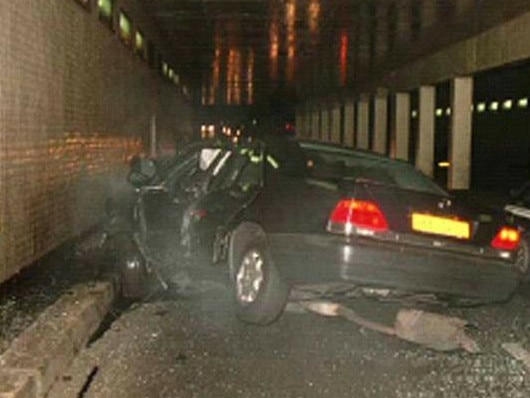
Petel, by now “frantic” according to Andersen, then drove to a police station where, after 25-minutes of “pleading” he was handcuffed and put in a cell. It would be five months before authorities interviewed Petel.
Within minutes of the crash, two other calls would be made to emergency services. A couple who had witnessed the smash, once they were out of the tunnel managed to wave down a driver who was caring a rare at the time mobile phone who called the fire brigade while someone nearby who had heard the violent incident had called the Service d’Aide Medicale (SAMU).
‘Stay and play’ versus ‘scoop and run’
There is one final moment that some argue could have made the difference between life and death for the Princess of Wales.
It took six minutes for the first SAMU ambulances, which are staffed with doctors and nurses rather than paramedics, to arrive on the scene. When treatment was started on Diana, her pulse and blood pressure weakened and she was given CPR and put on a respirator.
Then came a highly controversial decision. In much of the world, emergency services rely on a ‘scoop and run’ method, that is collecting the patient and getting them to a hospital as fast as possible. In France, by contrast, they have what is known as a ‘stay and play’ approach.
This is why paramedics would try and stabilise Diana on the scene for nearly an hour after the crash, not heading off for the Pitié-Salpêtrière hospital until 42 minutes after the accident and during which time she had gone into cardiac arrest.

Even then, things went at a snail’s pace with the ambulance drivers ordered to go slowly so as possible so as not to jolt the patient. The 6.8 kilometre drive from the tunnel to the Pitié-Salpêtrière, a trip that usually took five minutes, ended up taking them 25 minutes even with police, now knowing the identity of the victim, having cleared the roads.
In a 2004 piece for Vanity Fair, Tom Sancton the co-author of Death of a Princess, explored whether Diana might hypothetically have survived had she made it to a hospital much, much faster. The conclusion? Sadly not.
According to Sancton, when the crash happened, Diana was still basically vertical but after the extraction would have been lying down. What doctors would only realise later was that she had suffered a herniated heart and that that change in position likely constricted her heart and stopped it beating normally.
“The damage to her heart had already happened and her death would have been inevitable at this point,” international trauma specialist Dr. Kenneth L. Mattox told Sancton. “ I think the result would have been the same in any trauma centre in the U.S. — even if she had been brought to the emergency room 15 minutes after the accident.”
If only …
It is impossible not to look back at the events of the last 24 hours of Diana’s life and to think ‘if only’ or ‘what if’ – what if she and Dodi had flown straight back to London? What if they had stayed in that night and not bothered venturing out for dinner?
What if they had taken Mohammed Al Fayed’s suggestion and stayed at the Ritz for the night? What if the princess had followed Trevor Rees-Jones’ suit and in those two or three seconds put on her seat belt too?
It is nearly impossible, even at the distance of 25 years, to wrap your head around the fact that such a simple, split second choice, could have made the difference between life and death; between her sons growing up surrounded by her love and joy and the heartbreak and trauma they instead endured.
As the chief of the Metropolitan Police, who lead the inquiry in the UK, Lord Stevens put it recently while speaking to the Beast: “There are a large number of issues to this kind of crash, and if you pulled away one aspect of this crash — one link in the chain — it would not happen.”
Daniela Elser is a royal expert and a writer with more than 15 years’ experience working with a number of Australia’s leading media titles.
Originally published as Devastating decisions that led to Princess Diana’s death



